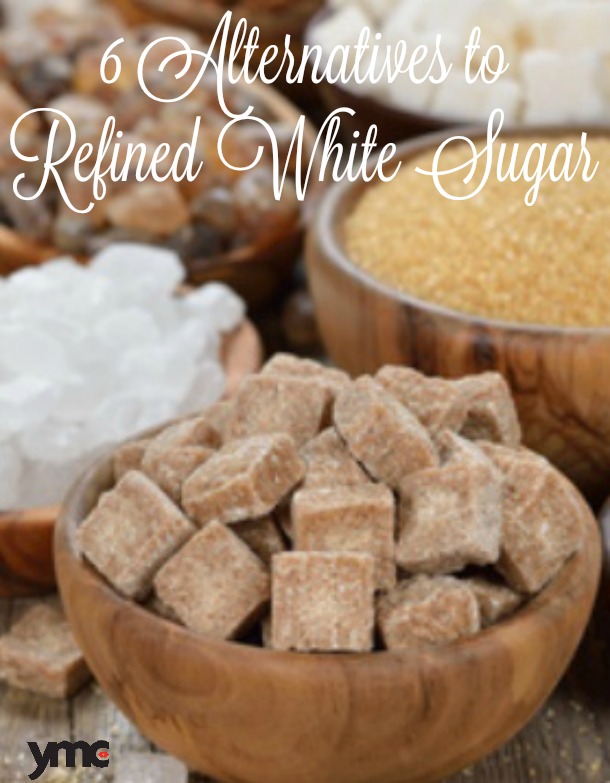
In recent years it’s become clear that white sugar, high fructose corn syrup, and chemical laden artificial sweeteners aren’t the healthiest choices when it comes to adding a bit of sweetness to our lives. But let’s be real here — no one is swearing off of sweets for good anytime soon. So in lieu of your standard sugar, I present to you a guide to six natural alternatives that might make your day a little sweeter — and maybe a little healthier too.
Calories per teaspoon: 22.5
Taste: Its unique flavor is lighter than honey and quite superior to maple flavored syrups.
Health benefits: Maple syrup contains some calcium, potassium, magnesium and trace amounts of B vitamins. It also boasts as many as 54 different antioxidants. Most maple syrup is naturally organic.
Other considerations: Maple syrup is about two thirds sucrose and should be used in moderation.
How it’s made: Maple trees are tapped to extract the sap, which is then boiled to create maple syrup.
Calories per teaspoon: 21.5
Taste: Flavors can vary depending on the origin of their pollen. It is often smoother than pasteurized honey with no aftertaste.
Health benefits: Raw honey is an alkaline-forming food that also contains antimicrobial properties. It may help fight colds, and local honey is said to help combat allergies.
Other considerations: Most honey is pasteurized, which destroys the natural enzymes and its potential benefits. To reap its benefits, always be sure to seek the raw variety. Be careful with new babies, though, as babies shouldn’t be exposed to honey until after their first birthday.
How it’s made: House bees suck nectar from the stomachs of gatherer bees and chew it, so enzymes can break it into simple sugars. Appetizing, yes? It’s then deposited into the combs. The moisture evaporates, turning into what we know as honey.
Calories per teaspoon: 20
Taste: Its flavor is sweet and light with no distinctive characteristics.
Health benefits: Agave comes in low on the glycemic index, so it has less immediate effect on blood sugar levels.
Other considerations: Agave is high in fructose, which can contribute to insulin resistance and other health issues. There have also been reports that some brands of agave actually contain corn syrup and large amounts of pesticides, so be sure to only purchase brands you trust and read your labels.
How it’s made: Sap is extracted from the core of the agave plant, then filtered and heated at low temperatures.
Calories per teaspoon: 16
Taste: Strong, rich and bittersweet
Health benefits: It has a high mineral content including calcium, magnesium, potassium, copper, iron and selenium.
Other considerations: It has a very strong flavor that many people don’t like, so it may not be the best choice as a routine sugar substitute.
How it’s made: Molasses is the byproduct of sugar cane after the sugar has been extracted from the cane juice. Blackstrap molasses is produced after the third round of processing, making it the lowest in sugar content.
Calories per teaspoon: 0
Taste: Stevia is 200-300 times sweeter than sugar but may have a bitter aftertaste.
Health benefits: Stevia has no impact on blood sugar and may actually increase the production of insulin. It also contains zero calories, so it won’t promote weight gain.
Other considerations: Most stevia products contain added ingredients and may be bleached or highly processed, so pay attention to labels. Green leaf stevia is the most pure.
How it’s made: Glycosides are extracted from the Stevia plant with water and alcohol then re-crystalized into the end product. Because you can grow stevia in your garden, you can make your own powdered or liquid versions.
Calories per teaspoon: 16
Taste: The taste is similar to brown sugar with a slight hint of caramel flavor.
Health benefits: Coconut sugar offers trace amounts of vitamins, minerals, amino acids and antioxidants, as well as inulin, which acts as a pre-biotic. Though high in sucrose, it contains low amounts of fructose and glucose and is low on the glycemic index.
Other considerations: It’s still sugar and even though it contains healthy elements, they are only present in small amounts and should not be relied on as a nutritional source.
How it’s made: Sap is harvested from the flowers of a coconut tree. It’s then heated and dehydrated until it forms crystals or blocks, which are then broken up into sugar.
So there you have it, Mamas! No matter what source of natural sweetener you choose, always look for high-quality brands to be sure you’re getting all the benefits, with none of the additives that may be found in more mainstream products. It’s also important to remember that even though they may be natural sources, sugar is still sugar and is always best when used in moderation.
